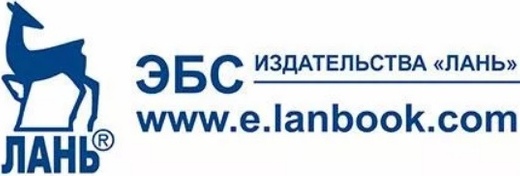The theory and cases of creative tourism
The pertinence of the study stems from the need to develop the domestic tourism market and creative tourism as one of its areas. Creativity has become a place building strategy as cities and regions seek to increase their appeal to the middle class, support the creative industries, or become “creative cities.” The article analyzes the conceptual apparatus of the creative industry, trends in the development of the creative economy. The practical connection between creativity and the creative economy is represented by specific examples of creative tourism associated with various festivals and events. The most famous are the Kunqu opera (Hangzhou, China), the birthplace of Hieronymus Bosch (Hertogenbosch, the Netherlands), Frevo-style music concerts (Recife, Brazil), the CounterPlay festival (Denmark), the #Urbanana project (North Rhine-Westphalia, Germany). In Russia, creative tours are a niche type of tourism and are not yet arranged in all regions, for example, in the Sverdlovsk and Ivanovo regions, the Perm Territory, and the Khanty-Mansiysk Autonomous District. Thus, the purpose of the study is to analyze the theory of creative tourism and identify the most successful examples of the implementation of creative tours. On the one hand, festivals and events serve to stimulate commercial activities, create new jobs and increase attendance, on the other hand, cultural events have become a common means by which creative spaces are created. The presence of creative events shows a growing relationship between the tourism industry and strategies for creating and promoting tourist destinations. The ability of a tourist destination to compete depends on its ability to transform basic inherited factors into created assets with a higher symbolic or iconic value.
Sarafanova A. G. Sarafanov A. A. (2022), “The theory and cases of creative tourism”, Research Result. Business and Service Technologies, 8 (3), pp. 54-64. DOI: 10.18413/2408-9346-2022-8-3-0-5
















While nobody left any comments to this publication.
You can be first.
Abankina, T. (2017), “Creative economy: transition to the capitalization of cultural heritage”, Questions of Economics, 4, pp. 100-116. DOI: 10.32609/0042-8736-2017-4-100-116.
Bakas, F.E., Duxbury, N., Remoaldo, P.C. and Matos, O. (2019), “The social utility of smallscale art festivals with creative tourism in Portugal”, International Journal of Event and Festival Management, 10 (3), pp. 248–266. doi: 10.1108/IJEFM-02-2019- 0009.
Barron, F., Montuori, A. and Barron, A. (Eds.) (1997), “Creators on creating: Awakening and cultivating the imaginative mind”, New York, Tarcher Penguin.
Cloke, P. (2007), “Creativity and tourism in rural environments”, in G. Richards, J. Wilson (Eds.). Tourism, creativity and development, New York: Routledge, pp. 37–47.
Davis, G.A. (1982), “A model of teaching for creative development”, Roeper Review, 5, pp. 27-29.
Duxbury, N., Silva, S. and de Castro, T.V. (2018), “Creative tourism development in small cities and rural areas in Portugal: Insights from start-up activities”, in book: Creating and managing experiences in cultural tourism, pp. 291–304. DOI:10.1142/9789813233683_0018.
Helson, R. (1990), “Creativity in women: outer and inner views over time”, in M.A. Runco, R.S. Albert (Eds.). Theories of creativity, Newbury Park, CA: Sage, pp. 46-58.
Jokela, T., Coutts, G. and Huhmarniemi, M. (2020), “Tradition and innovation in Arctic sustainable art and design”, Human, Culture, Education, 35 (1), pp. 84-99. doi: 10.34130/2233-1277-2020-1-84-99.
Korstanje, M., George, B. and Echarri Chavez, M. (2018), “The dark side of creative tourism: A philosophical dialogue with culture”, in book M.E. Korstanje (Ed.). Critical essays in tourism research, New York: Nova Science, pp. 19–48.
Kramvig, B. and Flemmen, A.B. (2019), “Turbulent indigenous objects: Controversies around cultural appropriation and recognition of difference”, Journal of Material Culture, 24 (1), pp. 64–82. doi: 10.1177/1359183518782719.
Lee, A.H.J., Wall, G. and Kovacs, J.F. (2015), “Creative food clusters and rural development through place branding: Culinary tourism initiatives in Stratford and Muskoka, Ontario, Canada”, Journal of Rural Studies, 39. pp. 133–144. doi: 10.1016/j.jrurstud.2015.05.001.
Li, P.Q. and Kovacs, J.F. (2021), “Creative tourism and creative spectacles in China”, Journal of Hospitality and Tourism Management, 49,
pp. 34-43. doi: 10.1016/j.jhtm.2021.08.023.
Long, P., Morpeth, N.D. (2016), “Tourism and the creative industries: Theories, policies and practice”, London: Routledge.
Lu, S., Zhu, W. and Wei, J. (2020), “Assessing the impacts of tourism events on city development in China: A perspective of event system”, Current Issues in Tourism, 23 (12), pp. 1528–1541. doi: 10.1080/13683500.2019.1643828.
Marques, L. and Borba, C. (2017), “Co-creating the city: Digital technology and creative tourism” // Tourism Management Perspectives, 24, pp. 86-93. doi: 10.1016/j.tmp.2017.07.007.
Richards, G. (2011), “Creativity and tourism, The state of the art”, Annals of Tourism Research, 38 (4), pp. 1225–1253. doi: 10.1016/j.annals.2011.07.008.
Richards, G. (2020), “Designing creative places: The role of creative tourism”, Annals of Tourism Research, 85. doi: 10.1016/j.annals.2020.102922.
Richards, G. and Raymond, C. (2000), “Creative Tourism”, ATLAS News, 23, pp. 16-20.
Richards, G. and Wilson, J. (2006), “Developing creativity in tourist experiences: A solution to the serial reproduction of culture?”, Tourism Management, 27 (6), pp. 1209–1223. doi: 10.1016/j.tourman.2005.06.002.
Sarantou, M., Kugapi, O. and Huhmarniemi, M. (2021), “Context mapping for creative tourism”, Annals of Tourism Research, 86. doi: 10.1016/j.annals.2020.103064.
Tan, S.K., Kung, S.F. and Luh, D.B. (2013), “A model of ‘creative experience’ in creative tourism”, Annals of Tourism Research, 41, pp. 153-174. doi: 10.1016/j.annals.2012.12.002.
Turok, I. (2009), “The distinctive city: Pitfalls in the pursuit of differential advantage”, Environment and Planning A, 41 (1), pp. 13–30. doi: 10.1068/a37379.
Volkov, S.K. (2020), “Creative Economy and Creative Entrepreneurship: An Academic Dimension”, Society and Economics, 11, pp. 21-30. doi: 10.31857/S020736760012597-5.
Zukin, S. (2010), “Naked city: The death and life of authentic urban places”, Oxford: Oxford University Press.